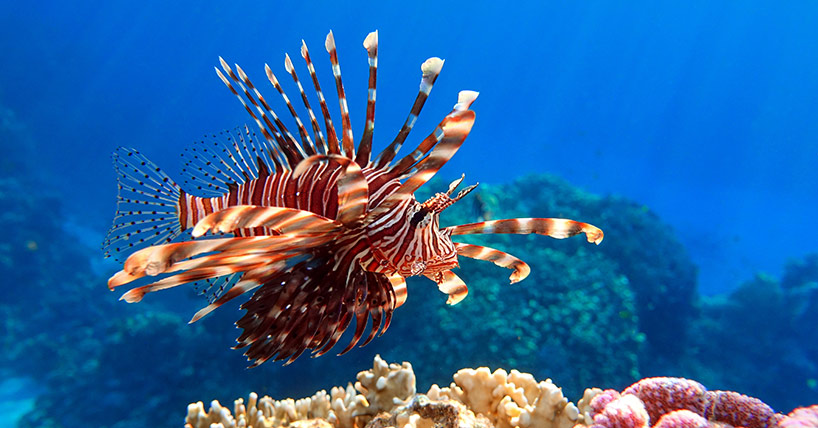Twitter invasive species
What half a million tweets revealed about invasive species
Published on: 21 October 2025
A study analysing over 500,000 tweets from 2006 to 2021 found that public discourse on invasive species heavily favours charismatic animals over ecologically harmful plants.
The research, published in Ecology & Society and involving Newcastle University, demonstrates how charismatic megafauna and dramatic narratives shape online conversations while scientifically relevant species, particularly invasive plants, generate minimal public engagement. The tweets for the study were collected through Twitter's then-free Academic Research API.
"We had a unique opportunity with Twitter's free academic access to understand what drives public attention to invasive species at a scale that had not been done before and where the gaps lie relative to scientific priorities," says Dr. Susan Canavan, an honorary researcher with the College of Science and Engineering at University of Galway, who led the international research team. "The patterns we found have important implications for conservation communication and policy."
Study co-author Emily Stevenson, postgraduate researcher at Newcastle University’s School of Natural and Environmental Sciences, said: “Our analysis revealed that public discussions disproportionately focus on animals, while invasive plants receive comparatively little attention”. This was in marked contrast to the results of a study led by Emily at Newcastle University, which showed that academic research on invasive species primarily concentrates on plants. She said: “By understanding what captures public attention, we can help bridge the gap between scientific knowledge and public awareness, leading to more effective and inclusive management strategies.”

What gets attention and what doesn't
The researchers tracked spikes in tweet activity to see what people actually talked about:
Cats topped the list of most-mentioned species. Despite being beloved pets, cats have contributed to 63 species extinctions globally and kill over a billion birds annually in the United States alone. Managing cat populations remains deeply contentious, balancing wildlife conservation with ethical questions about the cats themselves.
Other mammals followed a similar pattern. Pigs, dogs, squirrels, goats, rats and horses were frequently mentioned, often involving the same tension between our relationships with these animals and their impact as invasive species.
This taxonomic focus reflects what ecologists term "plant blindness." Despite plants comprising 57% of endangered species and including many highly destructive invasive taxa, they received disproportionately limited attention in online discourse. Plants generate less than 4% of conservation funding, a disparity that social media patterns both reflect and potentially reinforce.
"Some of our most damaging invasive species are plants, but they don't capture public imagination the way animals do," Dr. Canavan explains. "When invasive plants are invisible in public discourse, building support for their management becomes exponentially more difficult."
The 1% who shape the conversation
The study identified a striking concentration of influence on the platform then known as Twitter: just 1% of users generated 60% of all retweeted content about invasive species. This influential minority included reputable sources such as The New York Times, CNN, government agencies, and invasion biology experts.
However, it also encompassed social media personalities with millions of followers but no expertise in conservation science.
"This concentration of influence is significant," says Dr Canavan. "A small number of voices shape how millions of people understand invasive species.
Among the most-engaged posts was content from YouTuber Logan Paul documenting lionfish spearfishing in Belize. The post's viral reach, despite the author's lack of scientific credentials, illustrates how celebrity influencers increasingly mediate public understanding of ecological issues, with both potential benefits and risks for accurate information dissemination.
The role of narrative in viral content
Charismatic animals combined with dramatic human stories generated the highest engagement. Pablo Escobar's hippos in Colombia were a prime example. The drug trafficker illegally imported four hippos for his private zoo in the 1980s; following his death, the population bred freely in Colombian waterways. Media coverage of the animals spread widely across the platform, and public opposition to population control proved strong enough to halt management efforts.
Not all viral content involved appealing megafauna. The 2020 "mystery seeds" incident, in which thousands of Americans received unsolicited seed packages apparently from China, sparked widespread biosecurity concerns. The U.S. Department of Agriculture ultimately identified the shipments as a "brushing scam", a practice where vendors send inexpensive items to generate fraudulent reviews. Nevertheless, the episode generated substantial public engagement and prompted Amazon to prohibit imported plant and seed sales in the United States.
Why similar research may not happen again
The findings could inform how conservation organizations frame communication strategies and anticipate public response to management initiatives. However, the research methodology itself may not be replicable. Following Elon Musk's 2022 acquisition of Twitter and its rebranding as X, access to platform data became substantially more expensive for academic researchers. Concurrently, recent a study revealed that approximately half of environmentally focused accounts became inactive within six months of the ownership change.
The research team had anticipated these challenges, having previously warned in Nature that Twitter's evolving data policies could compromise conservation research.
The bigger picture
The research quantifies previously anecdotal observations about which species and narratives resonate with non-specialist audiences. Losing access to this data could leave scientists blind to public perceptions in the future.
The study appears in Ecology & Society. The research team included scientists from the Czech Academy of Sciences, University of Galway, institutions in South Africa, France, the United States, the United Kingdom, and Spain.
References:
Canavan, S., Pipek, P., Canavan, K., Jarić, I., Healy, K., Lieurance, D., Pattison, Z., Pyšek, P., Stevenson, E. A., & Novoa, A. (in press). From habitats to hashtags: Examining online discussions about invasive species. Ecology & Society.
Chang, C. H., Deshmukh, N. R., Armsworth, P. R., & Masuda, Y. J. (2023). Environmental users abandoned Twitter after Musk takeover. Trends in Ecology & Evolution, 38(10), 893–895.
Novoa, A., Canavan, S., Jarić, I., Pipek, P., & Pyšek, P. (2022). Musk's Twitter takeover jeopardizes culturomics. Nature, 612(7639), 211.
Stevenson, E.A., Robertson, P., Hickinbotham, E., Mair, L., Willby, N.J., Mill, A., Booy, O., Witts, K. & Pattison, Z. (2023) Synthesising 35 years of invasive non-native species research. Biological Invasions, 25, 2423-2438.
Adapted with thanks from the University of Galway.


